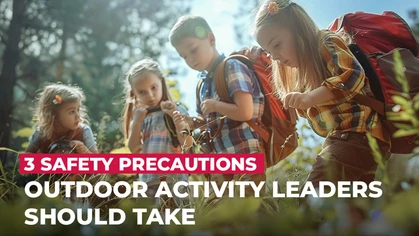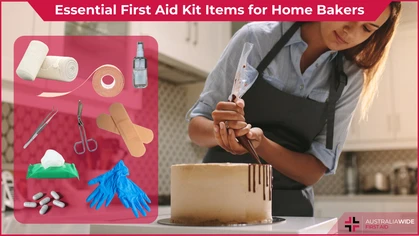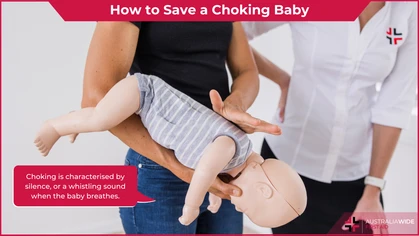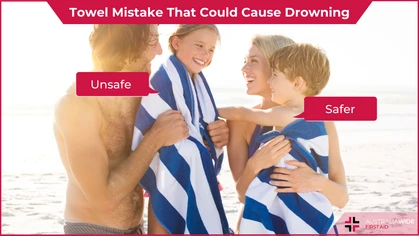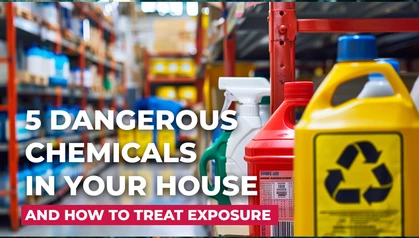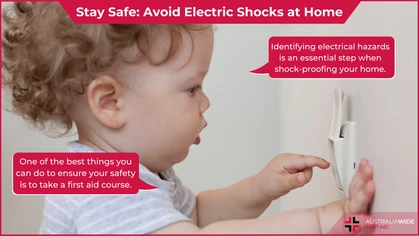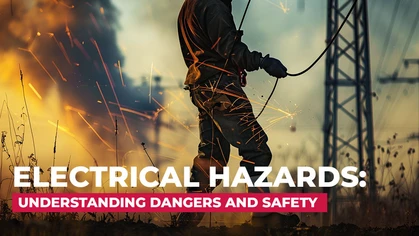Inland Waterway Safety

Danger

We all know the safest place at the beach to swim is between the flags
We all know the safest place at the beach to swim is between the flags; that supervision is a must when young swimmers are involved; that swimming pool gates need to be checked and locked. But what precautions do we take when we travel to and swim in Inland Waterways? In 2013-2014, Inland Waterways saw the highest number of drowning deaths (39%), compared to Swimming Pools (15%) and Beaches (13%). Overall, 266 people drowned in Australian waterways and 105 of these occurred in Inland Waterways (National Drowning Report, 2014).What is an Inland Waterway?
- River
- Creek
- Stream
- Lake
- Dam
- Lagoon
Inland Waterways and General Safety
Inland waterway safety is key. Follow the simple steps outlined in SEQ Water's Play It Safe guide:- Always supervise your children, remember there are no lifeguards on duty
- Don't swim after drinking alcohol. Only operate a power boat if your alcohol level reading is under 0.05, on the road and on the water. This equates to approximately one or two standard alcoholic drinks.
- Remain under 0.05 when driving your boat or vehicle
- Lock your vehicle and don't leave valuables unattended
- Respect other visitors and be mindful of the noise and other nuisances
- Keep in mind that much of the land surrounding the lake is private property which must not be accessed
- Exercise caution as water levels are subject to change and there may be submerged objects
- Be aware of local fauna, such a snakes. Always carry a reliable first aid kit
- Stay on trails. Venturing away from marked trails causes damage to the environment
- Keep safe distances between power boats and swimmers/paddle crafts. Boats should allow 30 meters between the boat and swimmer/paddle craft, jet skies should allow 60 meters between the jet ski and swimmer/paddle craft
- Water crafts should only be launched into the water from designated launch points (such as a boat ramp)
- Submerged Objects. Submerged trees, branches and boulders are often invisible from above the surface and present a real risk of neck and spinal injuries, especially to divers. Never dive into inland waterways. Enter the water slowly, feet first.
- Banks. A crumbling riverbank can mean an accidental fall into the water. Falls into Inland Waterways accounted for 29 out of the 105 deaths
- Riverbeds. Uneven or unstable riverbeds and slippery underwater obstacles can be a contributing factor to injury or death
- Water Temperature. Water can be a lot colder than it appears. Hypothermia can occur if the body's internal temperature suddenly drops and puts your vital organs at risk
- Flooded Waterways. Do not try and cross via swimming or with a paddle craft or powered vessel
- Heavy rainfall. Storms can dramatically alter the water level of inland waterways. Use caution, even in familiar environments
- Currents. Very unpredictable as they rarely follow the contour of the river. REMEMBER that water conditions in inland waterways can change often. Although it may have been suitable an hour ago, it can change hourly due to the current.
Real Life Stories
Kyle Vassil, aged 12, tragically died in a cold, dirty dam while at a school camp in February 2010. Kyle had been swimming for four or five minutes while close to shore when he started to struggle. When Kyle became anxious and panicked, due to a possible asthma attack, two of his classmates tried to assist him. It is hard to determine the exact physiological process which caused or contributed to Kyle's submersion, but Kyle was unable to be saved. 21-year old, Ben Reddich entered the Brisbane River in October 2014, to retrieve a nearby floating soccer ball that was floating away. The young fitness instructor failed to resurface. The ensuing search was deemed difficult due to submerged trees, branches, and boulders, that were present. Ben's body was found 2 days later. Sadly, his disappearance on a Sunday added to statistics that show it as the day with the highest incidence of people drowning. Although the overall drowning deaths decreased from 2012-2013 and was the lowest number recorded in the past 12 years, there was a 3 per cent increase on the 10 year average of drowning in inland waterways. ALWAYS take caution when swimming. Australia Wide First Aid wishes you a safe and injury-free summer.
Originally published at
https://www.australiawidefirstaid.com.au/resources/inland-waterway-safety
as part of the Australia Wide First Aid Articles Library







